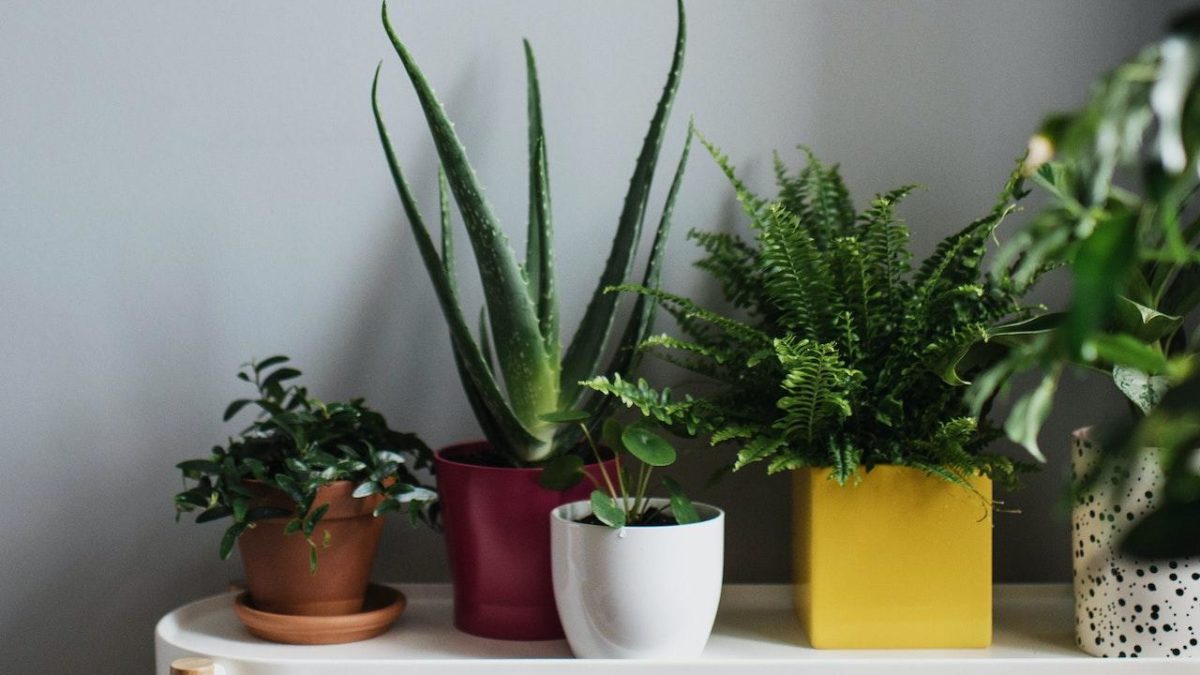Spiky houseplants are a type of plant that have sharp, pointy leaves. They are often used as ornamental plants, and can make a great addition to any home. These plants are easy to care for and are relatively low maintenance.
Spiky houseplants are a great way to add some interest to your home. They come in a variety of shapes and sizes and can be placed almost anywhere in your home. These plants are also easy to care for, and only require occasional watering and fertilizing.
This post will enlighten you about the history, benefits and type of spiky houseplants. You’ll also find out some of the myths that surround these beautiful houseplants.
The History Of Spiky Houseplants
Spiky houseplants have been around for centuries, and their popularity has only grown in recent years. These plants are perfect for those who want to add a bit of personality to their home dcor, and they come in a wide variety of shapes and sizes.
The history of spiky houseplants began in the tropical regions of the world, where they grew naturally in the wild. These plants were then brought back to Europe by explorers and traders, and they quickly became a popular addition to gardens and homes.
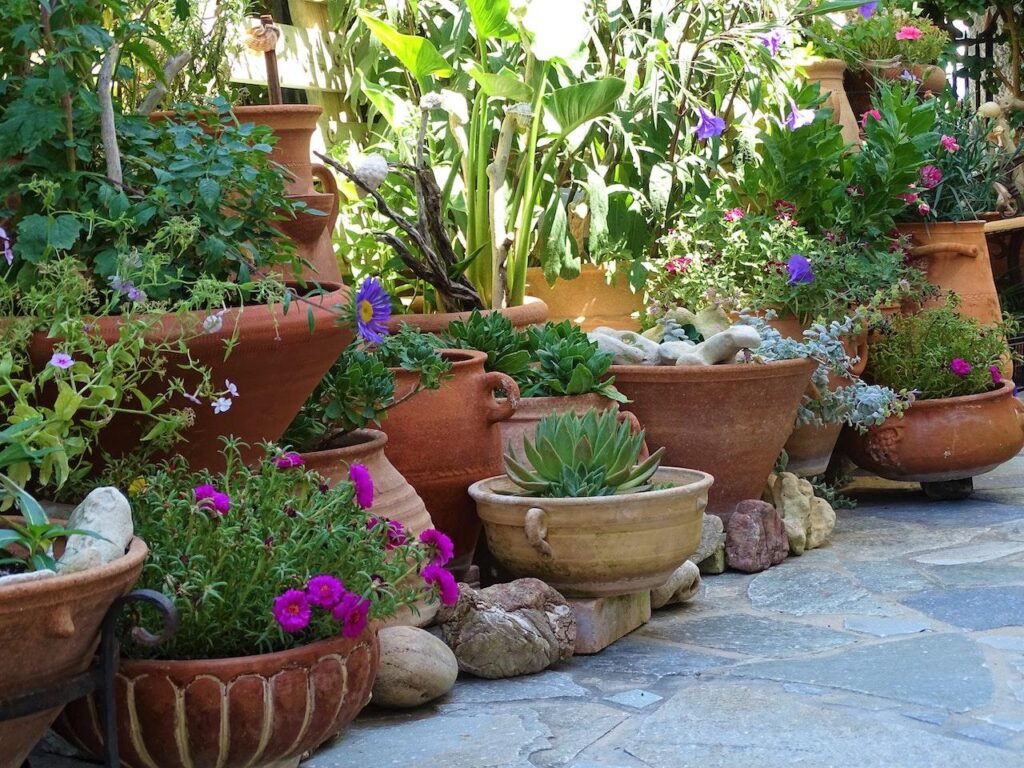
Today, there are hundreds of different varieties of spiky houseplants available, and new hybrids are being created all the time. Whether you’re looking for a small plant to add to your windowsill or a large one to fill up a corner of your room, you’re sure to find the perfect one to suit your needs.
Spiky Houseplants Myths And Legends
There are many myths and legends surrounding spiky houseplants. Some people believe that these plants are evil and should be avoided at all costs. Others believe that they are lucky charms that can bring good luck to their homes.
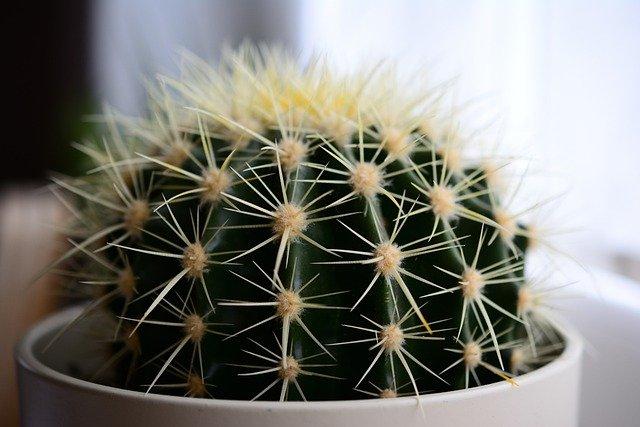
Whatever you believe, there is no denying that spiky houseplants are fascinating and have a long history. Let’s take a look at some of the most popular myths and legends about these plants.
One of the most popular myths about spiky houseplants is that they are evil. This is probably because of their sharp, pointy leaves. Some people believe that these plants are out to harm anyone who comes near them.
Another myth is that spiky houseplants are lucky charms. Many people believe that these plants can bring good luck to their homes. This is probably because of the sharp, pointy leaves. Some people believe that the sharp leaves can ward off evil spirits.
The Benefits Of Spiky Houseplants
There are many benefits of spiky houseplants that make them a great choice for your home. They can help to purify the air, improve your mood, and even boost your energy levels.
- Spiky houseplants are great at purifying the air. They help to remove toxins and pollutants from the air, making it healthier for you to breathe.
- Spiky houseplants can also help to improve your mood. They have a calming and relaxing effect, which can help you to feel more positive and upbeat.
- Spiky houseplants can also help to boost your energy levels.
- They are known to increase oxygen levels in the blood, which can help to improve your overall energy and vitality.
The Different Types Of Spiky Houseplants
There are many types of spiky houseplants, each with its own unique features. Here are some of the most popular types:
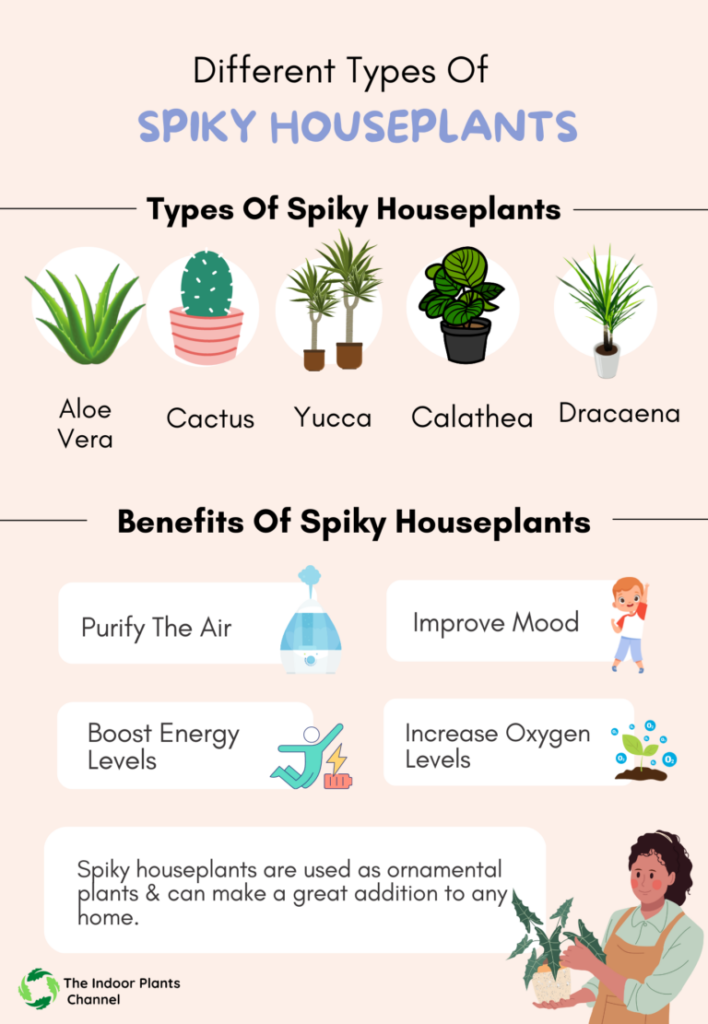
1. Aloe Vera
Aloe vera is a type of succulent that is native to Africa. It is a popular choice for a houseplant because it is very easy to care for and can thrive in almost any type of environment. Aloe vera plants have thick, fleshy leaves that store water, and they produce a gel that is often used in natural medicines.
2. Cactus
Cacti are a type of succulent that is native to the deserts of North and South America. They are adapted to survive in hot, dry climates and can store large amounts of water in their fleshy stems. Cacti come in a wide variety of shapes and sizes, and they are a popular choice for both indoor and outdoor gardens.
3. Yucca
Yucca is a type of plant that is native to the deserts of the southwestern United States. It is a popular choice for a houseplant because it is very easy to care for and can thrive in almost any type of environment. Yucca plants have long, sharp leaves that can be used as a natural defense against pests.
4. Calathea
Calathea is a type of plant that is native to the tropical rainforests of South America. It is a popular choice for a houseplant because it is very easy to care for and can thrive in almost any type of environment. Calathea plants have large, dark green leaves that are often used as decoration in homes and offices.
5. Dracaena
Dracaena is a type of plant that is native to the tropical rainforests of Africa. It is a popular choice for a houseplant because it is very easy to care for and can thrive in almost any type of environment. Dracaena plants have long, narrow leaves that are often used as decoration in homes and offices.
How To Care For Spiky Houseplants
Spiky houseplants are a great way to add some interest to your indoor space. They come in a variety of shapes, sizes, and colors, and can be a great addition to any home.
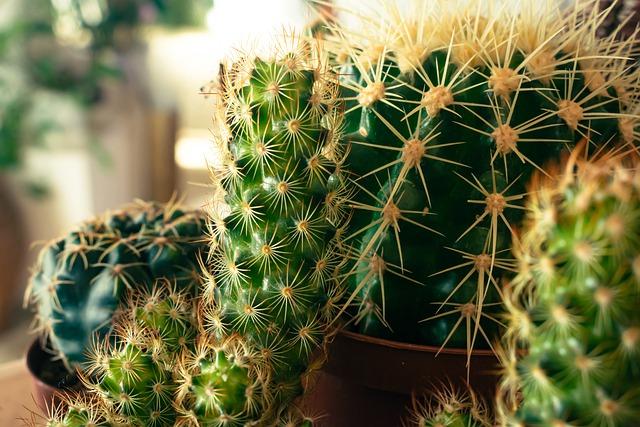
When it comes to caring for your spiky houseplant, there are a few things to keep in mind.
- Choose a pot that is large enough to accommodate the roots of your plant. Spiky plants can grow quite large, so it’s important to give them plenty of room to grow.
- Water your plant regularly. Spiky plants need a lot of water to stay healthy, so be sure to water them at least once a week. If you live in a dry climate, you may need to water them more often.
- Fertilize your plant regularly. Spiky plants are heavy feeders, so they need to be fertilized every few weeks. Be sure to use a fertilizer that is specifically designed for indoor plants.
- Keep your plant away from drafts. Spiky plants are sensitive to changes in temperature, so they should be kept in a spot that is warm and consistent.
The Best Conditions For Spiky Houseplants
When it comes to spiky houseplants, there are a few things to keep in mind in order to ensure that they thrive.
- Firstly, these plants prefer bright light. This means that they should be placed near a south- or west-facing window. If you don’t have a spot that gets bright enough light, you can supplement it with grow lights.
- In terms of watering, spiky houseplants like to be on the drier side. That is, you should let the soil dry out completely between waterings. These plants are also fairly tolerant of neglect, so if you forget to water them for a week or so, they will likely be just fine.
- When it comes to fertilizing, spiky houseplants don’t need a lot. In fact, too much fertilizer can burn their roots. Once a month is usually sufficient. Just be sure to use a diluted fertilizer solution so that you don’t accidentally damage your plant.
- Finally, spiky houseplants don’t like to be disturbed. This means that you should avoid repotting them too often. Once every two or three years is usually sufficient. When you do repot them, be sure to use a pot that is only slightly larger than the one they are currently in.
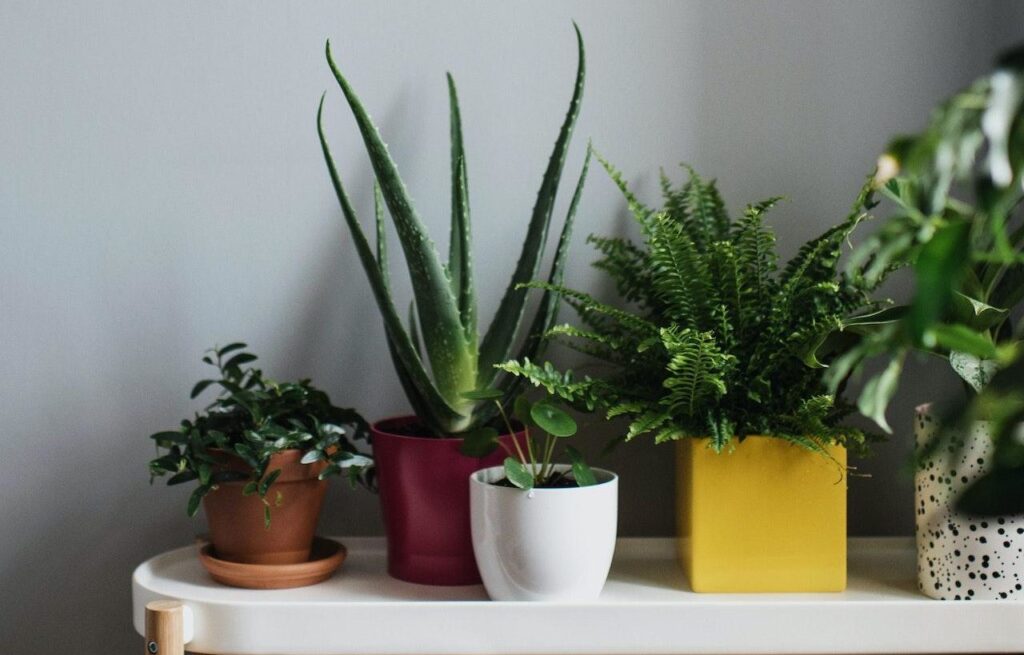
Bonus Tips
- Use it as decoration in your home.
- Put it in a pot and use it as a centerpiece.
- Use it to add some greenery to your office.
- Put it in a bright spot in your home to add some color.
- Use it to add some texture to your home decor.
Frequently Asked Questions
1: What are the best types of spiky houseplants for beginners?
For beginners, Aloe Vera, Snake Plant, and Yucca are the best types of spiky houseplants. These plants are low-maintenance, drought-tolerant, and can thrive in a variety of indoor conditions with minimal care.
2: How do spiky houseplants purify the air?
Spiky houseplants, such as Aloe Vera and Cacti, naturally absorb toxins like formaldehyde, benzene, and carbon monoxide. These plants help improve indoor air quality by removing harmful pollutants and releasing oxygen.
3: Can spiky houseplants thrive in low light?
Yes! Many spiky houseplants, like the Snake Plant and Yucca, can tolerate low light conditions. However, they will grow best with indirect, bright sunlight. Ensure they have a well-lit spot to thrive and remain healthy.
4: How often should I water spiky houseplants?
Spiky houseplants typically need water only when the soil is dry to the touch. For plants like Cacti and Aloe Vera, watering once a week or less is usually sufficient. Overwatering can lead to root rot, so always let the soil dry out completely between waterings.
5: What is the best potting soil for spiky houseplants?
Spiky houseplants, such as Aloe Vera and Cacti, prefer well-draining soil. A cactus mix or a blend of potting soil with perlite or sand works best for these types of plants. This ensures proper drainage and prevents water retention, which can lead to root rot.
Conclusion
There are different types of spiky houseplants, each with its own unique appearance and benefits. Whether you’re looking for a plant to add some visual interest to your home or one that can help purify the air, you’re sure to find the perfect option among these different varieties.
Michelle Wilde
Related posts
![]()
About Michelle Wilde
Michelle Wilde is a stay-at-home mom and avid plant lover. Armed with a post-graduate degree in Computer Science (no kidding!), she loves researching plants and landscapes. When she is not caring for her 4 kids, she spends time on her passion for plants. She blogs at www.indoorplantschannel.com, the trusted source for indoor plants.
Learn more
Subscribe
* You will receive the latest posts and updates about indoor plants!
Search
Recent Posts
Categories
- Beginner Guides (10)
- FAQ (206)
- General (2)
- How-To Guides (212)
- Indoor Plants (214)
- Pest Management (2)
- Plant Problem Solutions (4)
- Seasonal Growing (2)
- Specialized Environments (2)
- Specific Plant Care (3)
- Technical Growing (2)
